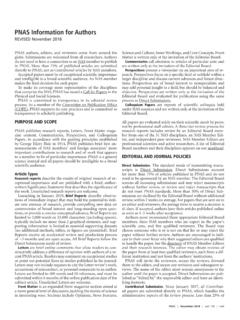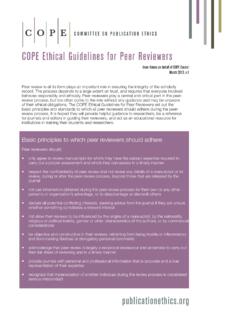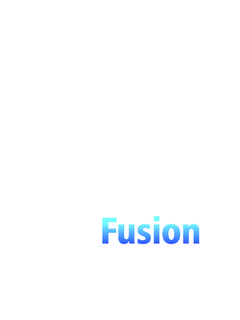Transcription of Computer Science Exam in Java - skylit.com
1 BBee PPrreeppaarreedd for the CCoommppuutteerr SScciieennccee EExxaamm iinn JJaavvaa Maria Litvin Phillips Academy, Andover, Massachusetts Gary Litvin Skylight Publishing, Andover, Massachusetts Skylight Publishing Andover, Massachusetts Sixth Edition Copyright 2014 by Maria Litvin, Gary Litvin, and Skylight Publishing All rights reserved. No part of this publication may be reproduced, stored in a retrieval system, or transmitted, in any form or by any means, electronic, mechanical, photocopying, recording, or otherwise, without the prior written permission of the authors and Skylight Publishing. Library of Congress Control Number: 2013918747 ISBN 978-0-9824775-3-3 Skylight Publishing 9 Bartlet Street, Suite 70 Andover, MA 01810 web: e-mail: 1 2 3 4 5 6 7 8 9 10 19 18 17 16 15 14 Printed in the United States of America 1 Chapter 1.
2 Exam Format, Grading, and Tips Exam Format and Materials Figure 1-1 shows the format of the AP Computer Science exam. The exam takes 3 hours of test time (plus breaks and time for instructions). It is divided into two sections. Section I consists of 40 multiple-choice questions with a total allotted time of 1 hour and 15 minutes ( to 2 minutes per question on average). Section II consists of four free-response questions with a total allotted time of 1 hour and 45 minutes (about 25 minutes per question). The free-response questions usually consist of two or three parts each. Section I: Multiple Choice 40 questions 1 hr 15 min 3 hours 1 hr 45 min Section II: Free Response 4 questions Figure 1-1.
3 AP Computer Science exam format No computers, calculators, other devices, books, or materials are allowed, only paper, pencil and an eraser. Pens are allowed, but we recommend that you use a pencil. At the exam you will receive the Quick Reference page, both in your multiple-choice questions booklet and again in your free-response questions booklet (in other words, the same Quick Reference page will be given to you twice). The Quick Reference provides a list of the java library classes and their methods included in the AP subset. Teachers can obtain a copy of the Quick Reference at AP Central (see A Guide to AP Central at ). This document is provided for reference it is expected that you will already be very familiar and comfortable with the required java library classes before the exam.
4 Copyright 2014 by Skylight Publishing 2 CHAPTER 1 ~ EXAM FORMAT, GRADING, AND TIPS The multiple-choice section is a mixture of questions related to general Computer Science terms, program design decisions, specific elements of java syntax, logical analysis of fragments of java code, properties of classes, and OOP concepts. The free-response section aims to cover a wide range of material: java arithmetic, algorithms, one- and two-dimensional arrays, strings, classes and interfaces, java library classes (within the AP subset), and so on. In past exams , students were asked to write a constructor or a method that performs a specified task under a given header for the method.
5 The second part of the question often refers to the class or method implemented in the first part, but each part is graded separately, and your implementation of Part (a) does not have to be correct in order for you to get full credit for Part (b). Part (c) may ask questions about your implementation or ask you to write an additional method that uses Parts (a) and/or (b). In that case you are to assume that the methods in the previous parts work as intended, regardless of what you wrote for them. Free-response questions may also include a design question, in which you are asked to design and write a complete small java class. Your design and implementation will be graded based on the correctness of the implementation of your class, including the encapsulation principle (declaring all instance variables private), and other criteria.
6 In the past, the AP CS exams included a specific case study, developed by the Exam Development Committee. In 2008-2014, the case study was GridWorld. Starting with the 2015 exam, neither GridWorld nor any other case study will be part of the exams . The College Board expects a typical AP CS course to include at least 20 hours of Computer lab work. The Development Committee has made available three sample labs. These labs are only examples designed to illustrate the scope and difficulty of lab work in a typical course. The content and code in these labs will not be tested on the AP CS exams . The java Subset The Development Committee has defined a restricted subset of java to be tested on the exam.
7 The purpose of the subset is to focus the AP CS program more on general concepts than on the specifics of java and to limit the scope, especially of material related to the peculiarities of java . The subset is described in The College Board s Computer Science A Course Description; we have a link to it from this book s web site Copyright 2014 by Skylight Publishing ~ THE java SUBSET 3 What is in the subset? Actually, quite a bit: Comments: /* .. */, //, and /** .. */, @param and @return tags. boolean, int, and double primitive data types. (int) and (double) casts. Other primitive data types, including char, are not in the subset and should be avoided on the exam.
8 Assignment (=), arithmetic (+, -, *, /, %), increment/decrement (++, --), compound assignment (+=, -=, *=, /=, %=), relational (<, >, <=, >=, ==, !=), and logical (&&, ||, !) operators. Use only the postfix form of ++ and -- (k++ or k--), and do not use them in expressions. + and += operators for concatenating strings. String s compareTo, equals, length, substring, and indexOf(String s) methods. \n, \\, and \" escape sequences in literal strings. and One- and two-dimensional arrays, , arrays of objects, initialized arrays such as int[] x = {1, 2, 3}; if-else, for, including the for each form, for(type x : values).., while, return. But do-while and switch are not included.
9 Classes. Constructors, the new operator, public and private methods, static methods, static variables and static final variables (constants), overloaded methods, null. All instance variables are private. Default initialization rules are not in the subset and won t come up on the exam. Inheritance, interfaces and abstract classes, extends, implements. Calling a superclass s constructor from a subclass (as in super(..)). Calling a superclass s method from a subclass (as in (..)). Passing this object to a method (as in (this)). NullPointerException, IndexOutOfBoundsException, ArrayIndexOutOfBoundsException, ArithmeticException, IllegalArgumentException. Copyright 2014 by Skylight Publishing 4 CHAPTER 1 ~ EXAM FORMAT, GRADING, AND TIPS Library classes, methods, and constants: Object: equals(Object other), toString() String: length(), substring(.)
10 , indexOf(String s) Integer: Integer(int x), intValue(); and Double: Double(double x), doubleValue() Math: abs(int x), abs(double x), pow(double base, double exp), sqrt(double x), random() Also understand toString methods for all objects, the equals and compareTo methods for String, Integer, and Double. Comparable<T> interface is not in the subset, but is worth knowing. The List<E> interface and the ArrayList<E> class (see Section ). If you feel you must stray from the subset in your free-response solution, you might have misunderstood the problem and be making it harder than it is. At the same time, it is OK to use such features outside the subset as (..) and (.)








